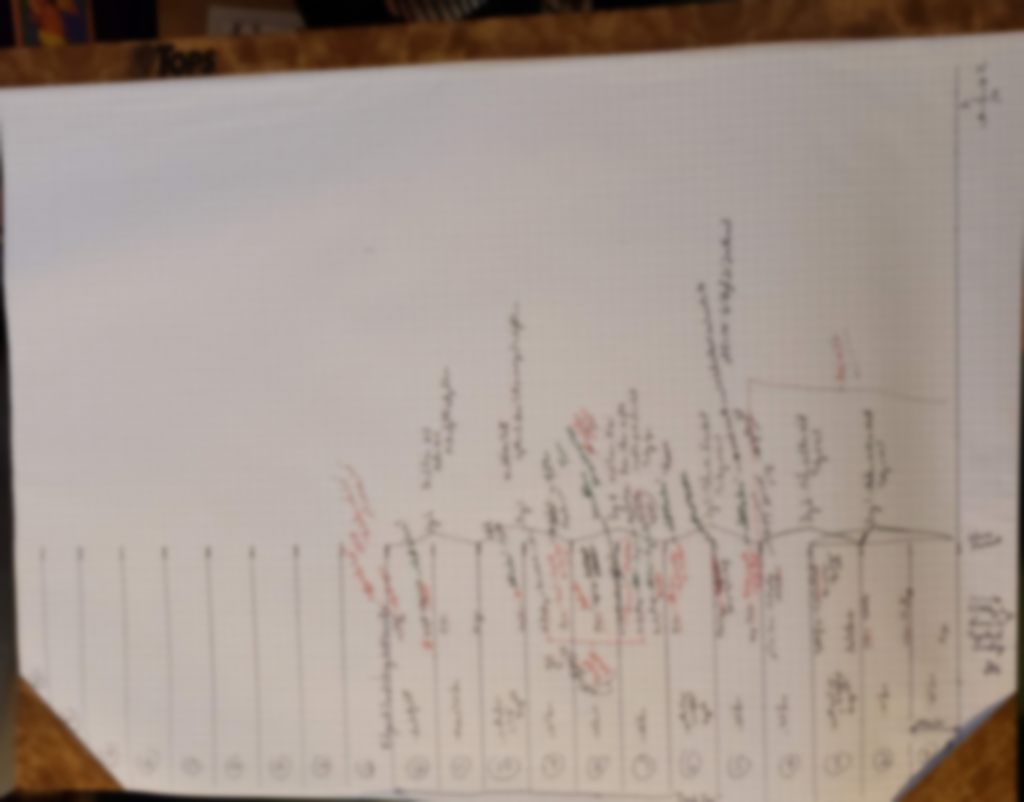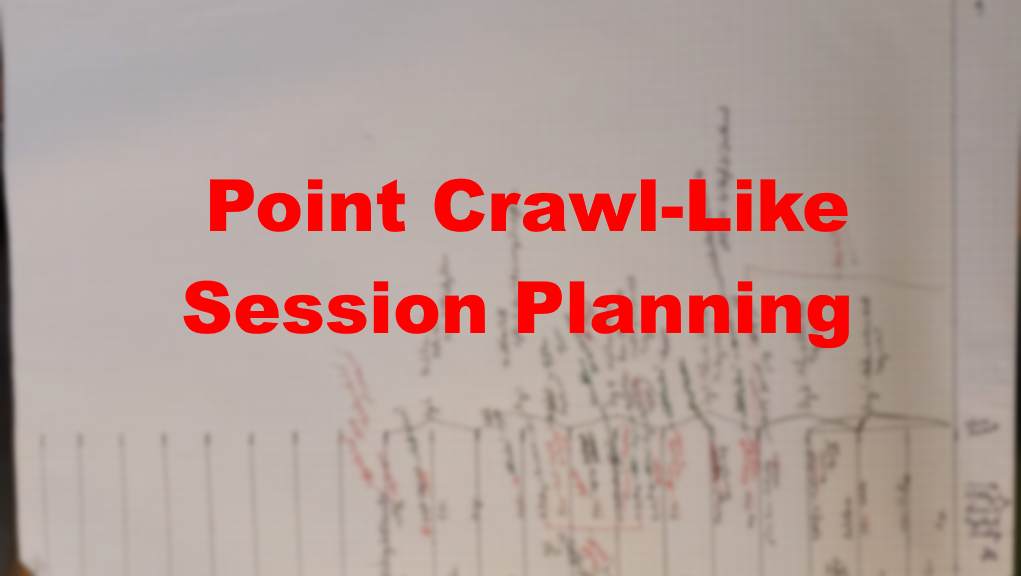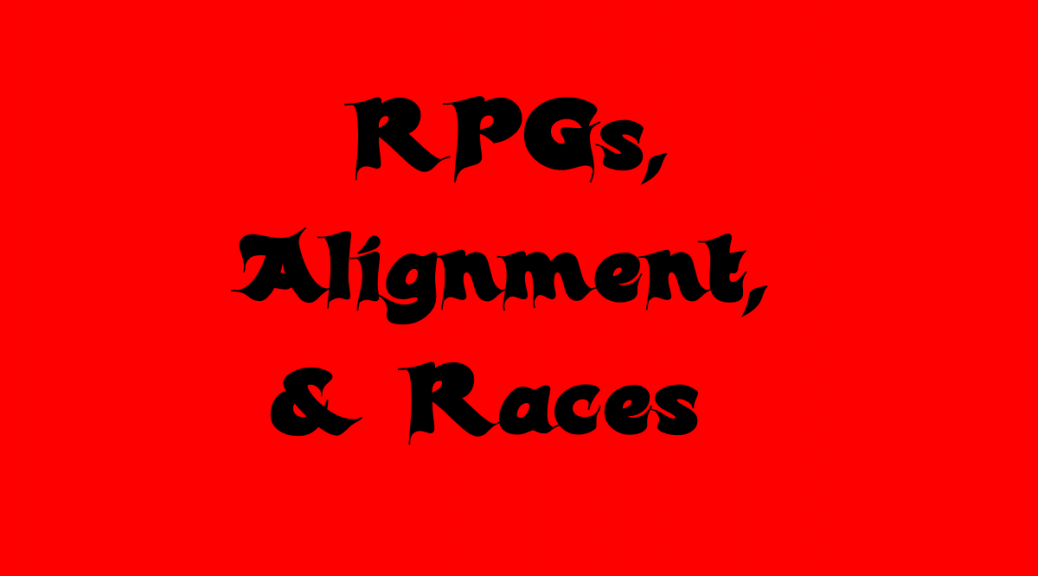Alignment and racism is now a topic of conversation in RPGs and most notably, the “big-gun” in the RPG space, D&D. Below I work through my thoughts on these issues.
ALIGNMENT
First some history, alignment entered the RPG space via the fantasy rules in the table top war game Chainmail. Chainmail introduced the three-point alignment system: law, neutral, chaos, to gaming. The idea for this is one side of the battle represented the good guys and another the bad guys, and the neutrals could be recruited to either side.
This lead to the idea of alignment languages, which were means of one side communicating with another.
While Three Hearts and Three Lions, Lord of the Rings, and the Elric of Melnibone series are cited as the influence for alignment, it also comes from the tales of King Arthur, and other chivalric tales of good vs. evil.
All of these things were an influence on Gary Gygax when he took the initial idea and inspiration from Dave Arneson to create the original version of D&D in the first three books in the box set. I know more about Gygax’s thoughts on alignment, so that is all I will speak to here.
Sadly, alignment became more complex in AD&D with the nine-point alignment system that combines the original law, chaos, & neutrality with good and evil. This gave rise to more alignment languages, spells and items for protecting from good or evil, detecting alignment, knowing alignment, etc.
The idea that one is their alignment took root among many. Even though Gygax wrote that one’s actions determined whether one adhered to their stated alignment. Also detect evil whether a spell, item, or ability only indicates a being or creature who is wholly evil, like a vampire, lich, demon, or devil, or very committed individual. That got lost in the Gygaxian prose.
MY TAKE ON ALIGNMENT
I’ve never liked alignment languages. We never used them back in the day. Sadly, we used alignment like a hard and fast thing for good vs. evil. In one game, the DM allowed a player to have a drow, and my brother and I with “good” characters” killed the drow character in his sleep. Who was evil in that interaction? I wrote more about it here.
With 30+ years of life and gaming experience since high school, I no longer allow player vs. player/PC vs. PC conflict. I wouldn’t want it to happen to me, so I just don’t allow it. The only exceptions would be if a villain charmed or blackmailed a PC into siding with them, or a one shot where one of the party is a traitor. The nature of going against the party would not be killing characters, but impeding progress, hiding clues, swiping the item they are after, etc. However, this would require buy in by players and very clear and careful boundaries established by the GM to avoid problems.
In my current games, alignment is very loose. I don’t emphasize it at all. There are no alignment languages. Good or evil is how one acts. In my regular Sunday AD&D game, instead of explicit alignments, the central struggle is one’s approach to death. Accepting death and only doing natural things to avoid it is essentially “good,” while attempting to cheat or avoid death by turning to the “dark powers” and undeath is “evil.” This has lead to a party with stated evil alignments among some of the PCs. Yet they are acting like heroes because they see the money in it and don’t like undead.
I’ve used the old tropes of other creatures being evil, but the way it has worked out in game, the PCs haven’t just killed them just to kill them. Giants raiding wagon trains were killed. Hungry ogres trying to make them a meal were killed in self defense. So there are ways to make groups of humanoids more like factions than evil to be eradicated.
RACES & ALIGNMENT
Sadly, the way races are pigeon-holed into a particular alignment is based on folk tales and various fantasy literature, such as Tolkien. Tolkien explained in The Silmarilion that orcs were tortured and corrupted elves. Since elves are the analog of angels, this makes orcs “fallen angels” and thus demons/devils. His influence for this was his attempt to infuse his Christian believes into his mythos. Angels are without a doubt good, and demons & devils equally evil.
The groups of creatures that fall under the umbrella of evil are thus worthy of death on sight. This gives rise to the murder hobo trope, where they just kill all the evil and take their stuff.
It also has the subtle influence to perpetuate the ideas that humanity is separated into multiple races. Race is an artificial construct to separate humanity into varying levels of “acceptable” groups. If you’re a Bible believer, it says that all of us descend from Adam & Eve, and then Noah. Many arguments for justifying slavery in the U.S.A illogically claimed they were descendants of Cain. None of Cain’s descendants are claimed to have survived the flood. Other arguments pointed to the descendants of one of Noah’s sons, and his shame as justification for slavery. In all cases, descendants of Adam & Eve. DNA also agrees that all of humanity is related. I think race is a word we should only use to refer to all of humanity. We need other words to describe those who are different from us. Ancestry and ethnicity are much more helpful terms in this regard.
To get away from the overused trope that all groups are good or all groups are evil, we need to use factions. Factions are like nations in the real world, and the various groups within each nation. Factions favor a certain viewpoint and come together to face common foes/challenges/issues. While most orcs might unite under the same banner, some would remain neutral, or align with another faction.
CONCLUSION
There are many that feel like the changes many want that treat the historically “totally evil and unredeemable ‘races'” in D&D and other RPGs as actually multifaceted and complex communities composed of a diverse cross-section of individuals is “ruining the game.”
While I admit to the change in mindset can be challenging at first, why would one want to have only one way to do things? I don’t run monsters from the game’s bestiary 100% by the book, why do I have to have all of a certain type of creature be totally evil? Just as I modify other rules in the game to suit my own style for running the game.
The only creatures who should be totally evil are demons, devils, and their minions who know they are following demons and devils. Those tricked into following demons and devils or doing their bidding may not be evil, just duped. How many groups of PCs have unknowingly advanced the plots of the villain? Is that evil if they do good along the way? If they don’t have the full picture the GM has set in place until “the big reveal,” when they discover their plans coincided with the villain.
Complex plots with twists and turns are more realistic. As the old adage goes, “Truth is stranger than fiction.”
It doesn’t make sense why talking about change should be upsetting. I know that being open to hearing the ideas of others can often challenge our habits and beliefs, but we live in the real world where that happens frequently, especially with the instant communication of the internet. We can choose to unplug and live in a bubble cut off from others, or we can choose to interact with others in real life and online.
We limit our creativity and the possibilities if every session is find the evil, kill it, and take its stuff. Monsters are not all intelligent. Some are just acting on instinct to eat, or protect young or their territory. If these creatures are terrorizing a village, do you have to kill them to save the village? Can you not find a way to lure them to a steep and secluded valley and trap them there so they can live and do their own thing without eating villagers? Combat is dangerous. Avoiding a fight is the best way to live long enough to get the treasure or accomplish some other goal.
If treating the local kobold tribe fairly, will they not be more likely to stand with you when the zombie hoard invades? Making allies of them keeps the land populated and less likely to fill up with more dangerous and larger predators, or unfriendly factions.
Just as our ideas of how to make an adventure, or our characters more interesting requires change, playing a COOPERATIVE AND INTERACTIVE GAME, like RPGs, should direct us to listen to the ideas of others. An RPG session, like improv, requires those at the table to riff off of each others shared narrative.
Don’t go yelling “story games” and run off. Explain to me how you have an RPG session without some sort of story to set the scene? Without story it is a series of random fights and occasional puzzled like a boring multiplayer video game.
How do the PCs know where the dungeon is, or the monster’s lair is, without some explanation? You don’t want the GM to railroad the game, so how does your open sandbox setting work without story? It is OK to let the “younger generation” add their mark to the game and express how they feel the story can be more fun.
So many of the arguments against changes to RPGs or new RPGs is that this isn’t how you did it back in the day. So what? Why is how you did it 30 or 40 years ago so important to continue? I don’t have a problem with understanding the history of the game and the way it has changed, but there is no one size fits all. If there was one game that did it all, there wouldn’t be more than one card game, or more than one board game, or more than one video game, or more than one RPG. Just as there is more than one story in literature and video, there is more than one way to RPG. If your way was the best way, everyone would agree with you.
There’s no need to be hurtful, hateful, or bitter if someone suggests a different way to play. Going that route is giving into the same narrow mindedness of the idiots during the “Satanic Panic.” If you are old enough to remember how stupid and uninformed those who yelled the loudest were, why are you acting like that when someone dares to say there’s more than one way to do it?
Games are supposed to be fun. Why are you suddenly against fun? Go take your Geritol and watch Lawrence Welk and leave the rest of the world in peace. (I apologize to anyone who really likes Lawrence Welk, I just had way too many episodes forced on me back when, I don’t need to see another episode ever again.) This attitude of a certain way is the only way is for the close-minded attitudes that mirror the “Satanic Panic.” There’s no room for such lack of creativity and fun in a game of “make believe with rules.”






